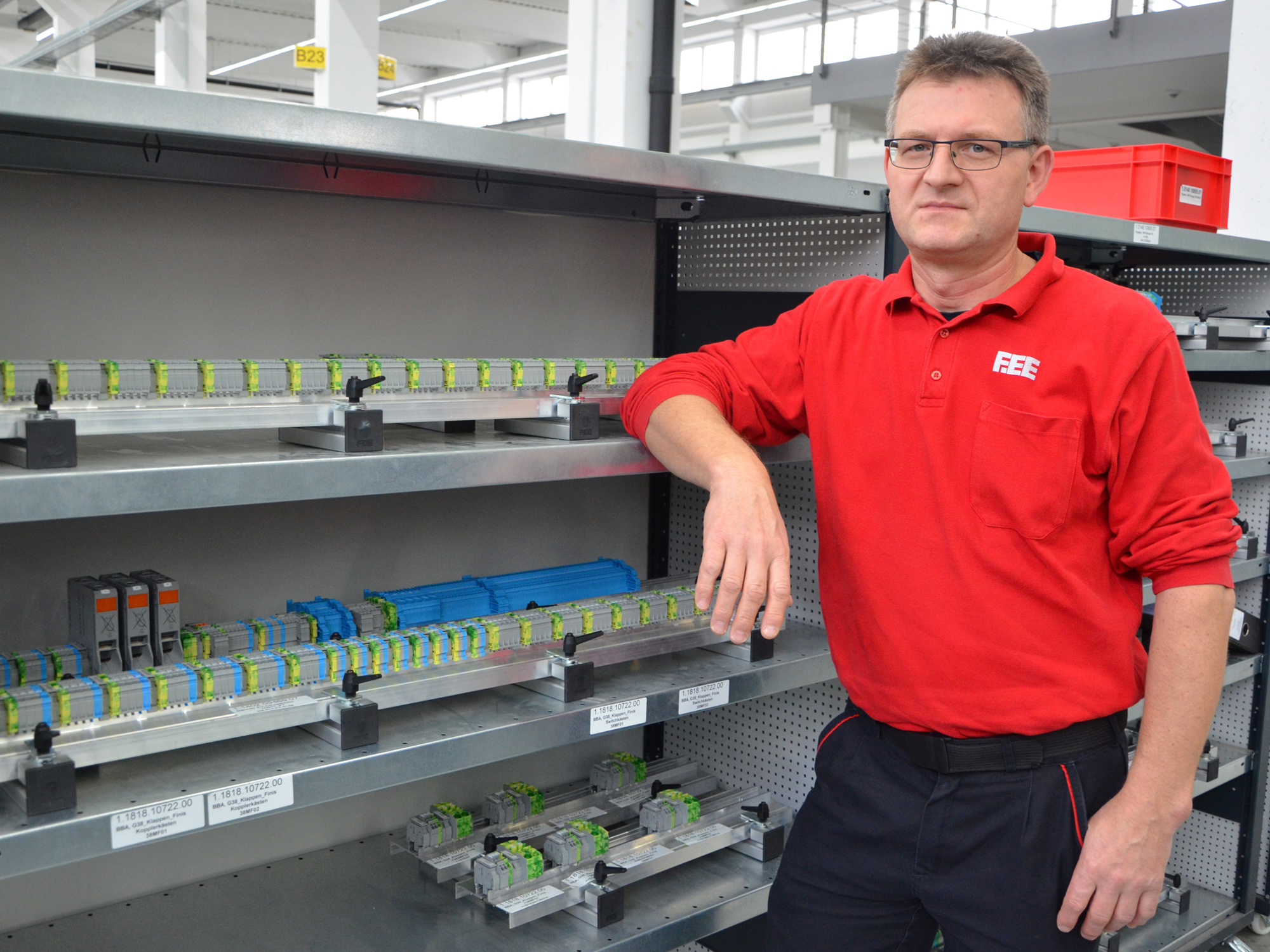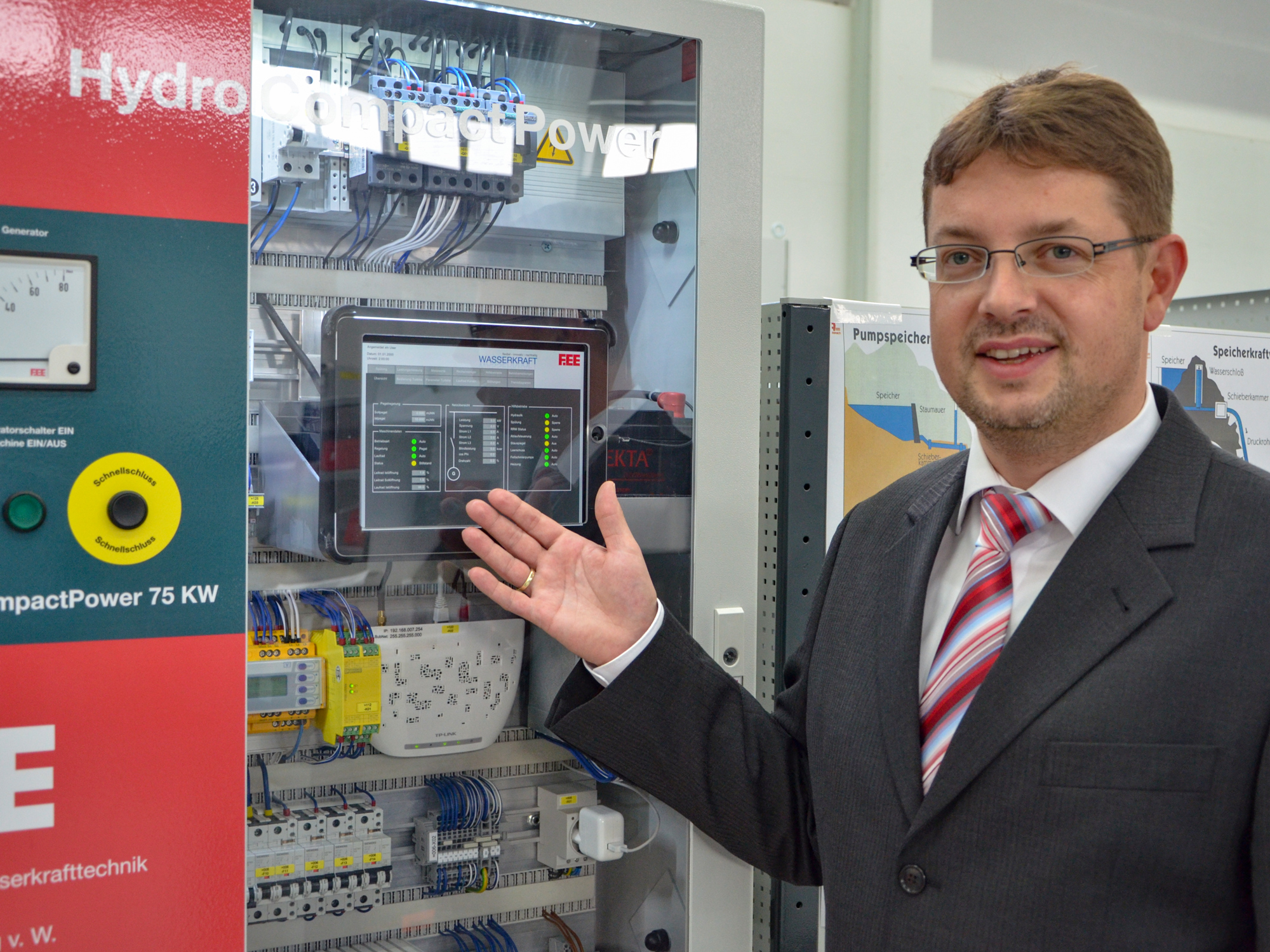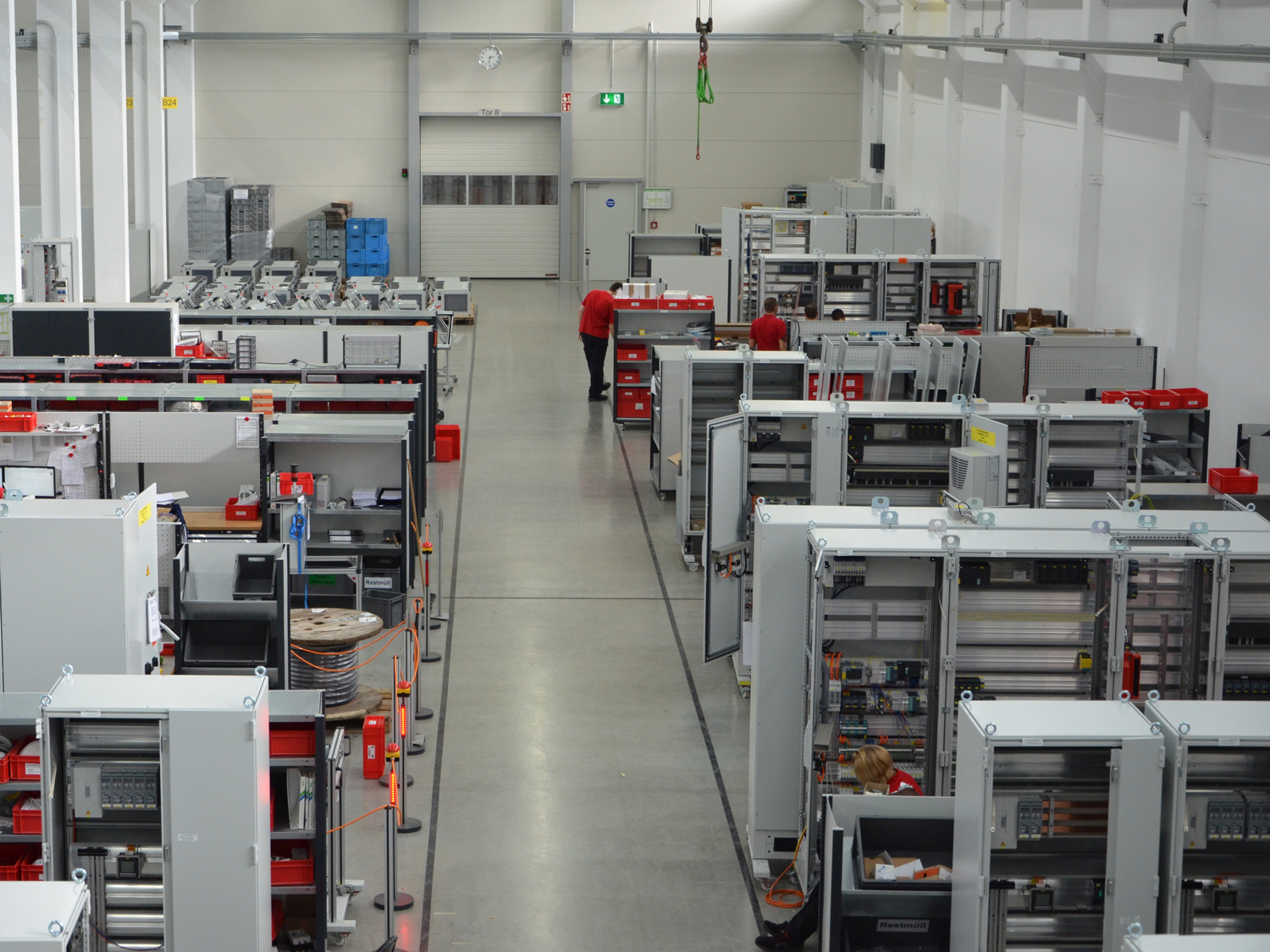“The WAGO patent for spring pressure connection technology led us, and many of our customers, to rethink things,” claims Fischer. At F.EE, they were excited by the maintenance-free module, which is easy to install, and does not even need ferrules. The most important argument for the products from Minden came from the control cabinet designers, who were convinced because the components did not come loose in the control cabinets. “We always had to re-tighten screw connections,” states Fischer, who clearly remembers the day when WAGO’s patent for spring pressure connection technology expired. “From that day forward, all of their competitors suddenly added springs to their terminal blocks,” he says with a laugh.
However, F.EE remained loyal to WAGO, despite the competition. “WAGO terminal blocks are standard equipment for us,” explains Rainer Walbrun, F.EE Purchasing Manager. “Wherever possible, we rely on TOPJOB ® S from WAGO.” In practice, the customers suggest several terminal block manufacturers, and the F.EE team then selects the best solution from their point of view. “We do not buy cheap goods. We want the best product at the best price, for us and for our customers. This is the only way to collaborate,” opines the purchasing manager. “Also, one product is not enough to be decisive,” assures Walbrun, “the entire package has to pass muster.”


